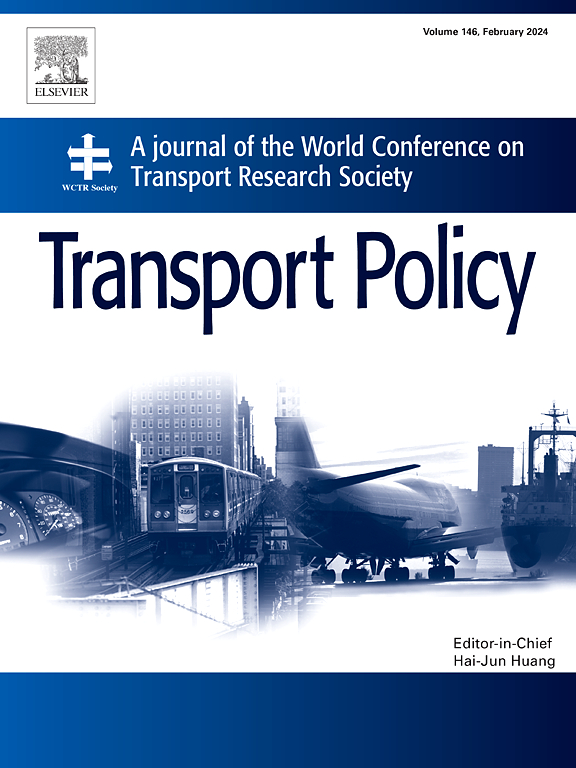A quantified planning method of local public transport services for expanding residents’ activity opportunities
IF 6.3
2区 工程技术
Q1 ECONOMICS
引用次数: 0
Abstract
The purpose of public transport is to expand activity opportunities of residents. Many public transport planning methods focus on the needs of residents. However, residents can adapt to the environment and form limited needs in areas with low public transport service levels, such as rural areas. Therefore, it is important to focus on activity opportunities (various states of people (being) and actions (being able)) rather than needs. The authors constructed a method for local public transport planning that focuses on activity opportunities; however, the variables and solutions of the model were abstract and thus did not reach the stage of practical application. Therefore, this study aimed to put into practical use a supporting method for local public transport planning. This method consists of a “measurement model for activity opportunity,” in which a given bus service and the ability to use it are variables, and an “evaluation model for planning alternatives” that incorporates a social relationship function and disparity principle. Through a case analysis in a rural area to which this method was applied, its usefulness was verified, and it was confirmed that it can contribute to public transport planning to increase activity opportunities.
扩大居民活动机会的地方公共交通服务量化规划方法
公共交通的目的是扩大居民的活动机会。许多公共交通规划方法都注重居民的需求。然而,在农村等公共交通服务水平较低的地区,居民能够适应环境并形成有限的需求。因此,重要的是要关注活动机会(人(存在)和行动(能够)的各种状态),而不是需求。作者构建了一种以活动机会为重点的地方公共交通规划方法,但该模型的变量和解决方案比较抽象,因此没有达到实际应用的阶段。因此,本研究旨在将地方公共交通规划的辅助方法付诸实践。该方法由 "活动机会测量模型 "和 "规划备选方案评估模型 "组成,前者以特定公交服务和使用该服务的能力为变量,后者则结合了社会关系函数和差异原则。通过在一个农村地区应用该方法的案例分析,验证了该方法的实用性,并确认该方法有助于公共交通规划,以增加活动机会。
本文章由计算机程序翻译,如有差异,请以英文原文为准。
求助全文
约1分钟内获得全文
求助全文
来源期刊

Transport Policy
Multiple-
CiteScore
12.10
自引率
10.30%
发文量
282
期刊介绍:
Transport Policy is an international journal aimed at bridging the gap between theory and practice in transport. Its subject areas reflect the concerns of policymakers in government, industry, voluntary organisations and the public at large, providing independent, original and rigorous analysis to understand how policy decisions have been taken, monitor their effects, and suggest how they may be improved. The journal treats the transport sector comprehensively, and in the context of other sectors including energy, housing, industry and planning. All modes are covered: land, sea and air; road and rail; public and private; motorised and non-motorised; passenger and freight.
 求助内容:
求助内容: 应助结果提醒方式:
应助结果提醒方式:


